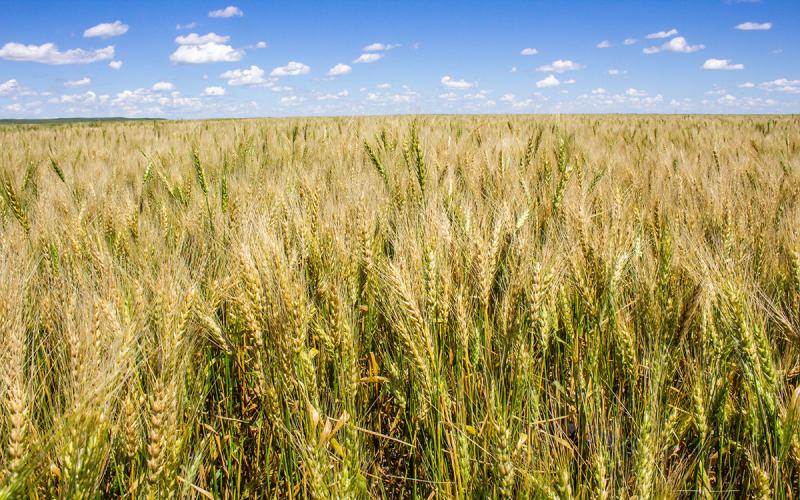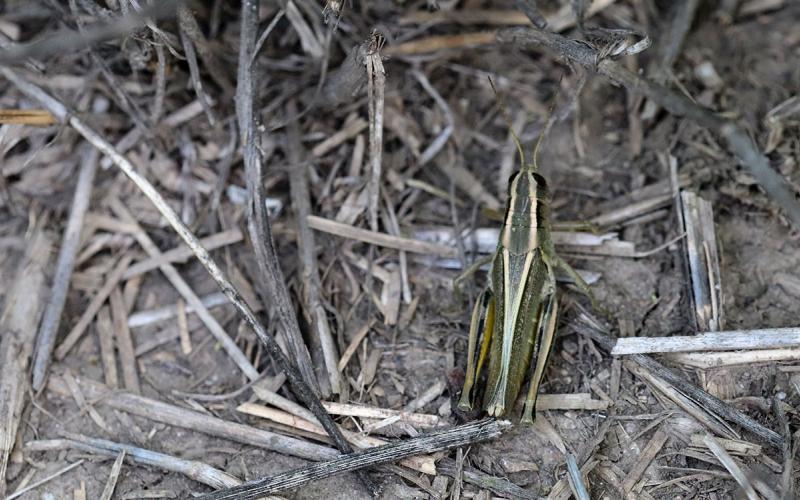This article was written by Randy Englund, South Dakota Wheat Commission Executive Director.
In spite of the open winter and some of the worst drought conditions in history, South Dakota ended up with a very good wheat crop in terms of yield and quality in 2012. The winter wheat yields averaged 50 bushels to the acre; second highest average yield in SD recorded history. Spring wheat yields averaged 41 bushels per acre; fourth highest in SD recorded history. Both winter and spring wheat had good protein and test weight. The big story was the spring wheat acres. In 2012, South Dakota farmers planted 1,080,000 acres of spring wheat, the lowest number of spring wheat acres since 1885, when 1,010,000 acres were seeded.
A look back over the last one hundred years of wheat production in South Dakota provides some interesting numbers.
It’s been said that the beginning of the past century, the period of 1900 to 1920, was the “Golden Age of Agriculture.” The average gross income of farms more than doubled during this period and the value of farms tripled. The increased use of bigger and more powerful machinery was largely the key to farmers’ success. It was truly a time of “Freedom to Farm”, as the farm bill wasn’t developed until 1933.
There were nearly 80,000 farms in South Dakota at the beginning of the 20th century. Contrast that to the latest census figures of 31,284.
South Dakota’s wheat production in 1900 was 26.3 million bushels, grown on 4.05 million acres. The average yield was 6.5 bushels to the acre and the average price was 58 cents/bushel. South Dakota was considered a wheat state then, with only 1.3 million acres of corn being grown. Corn averaged 27 bushels/acre and was worth 29 cents per bushel.
Spring wheat was the predominant class of wheat grown in South Dakota in the first half of the century. Of the 4 million acres harvested in 1900, almost all were spring wheat acres. Production of hard red winter wheat did not approach 10 million bushels until 1957, when state winter wheat production doubled.
The 1929 stock market crash took its toll on wheat prices, which went from $1 in 1929, to 0.56 cents in 1930. Speaking of drought, the “dirty thirties” brought the state’s record low yield of 4.3 bushels per acre in 1933. The lowest total production on record was 732 thousand bushels in 1934. That year 3,035,000 acres were planted, but only 158,000 were harvested.
We ended the 20th century with a new record yield of 39.9 bushels per acre in 1999. It’s interesting to note that total harvested wheat acres in 1999 was 940,000 less than 1900, yet in 1999 total wheat production was 3.5 times greater.
Which brings us to the current century.
It is estimated that the world population will increase from a current 7 billion people to 9 billion in the 2050. To match population growth The United Nations’ Food and Agriculture Organization (FAO) estimates that global food production will need to double between now and 2050 to feed the world.
Farm producers in the United States will need to dramatically increase yields over the next twenty years to meet the world’s growing population. Producing more wheat with fewer inputs in a sustainable manner will be essential in meeting the needs of the planet’s population.
It is estimated that by the year 2020, U.S. wheat trade will increase by 20 percent or 737 million bushels. This is equal to seven times South Dakota’s current annual wheat production.
For decades pessimists have been telling us farm technology would run out and we would reach the limits to crop yields and farm productivity. Yet, we tripled wheat production in the United States between 1950 and 1990.
In 1961, when the South Dakota Wheat Commission was established by farmers, wheat yields were 14.5 bushels per acre. SD produced 33.5 million bushels on 2.3 million harvested acres. In 2012, SD Wheat farmers produced three times as much wheat on essentially the same acres (2.2 million harvested acres at 45.8 bushels per acre).
The future challenges are great and considerable investment in research will be needed to meet growing demands. Developing new varieties and researching ways to increase yields with fewer inputs will be at the forefront of these challenges. Building positive working, diplomatic and trade relationships with global trading partners such as China will be equally as important. Your South Dakota Wheat Commission will continue to invest the wheat checkoff in both research and market development so that South Dakota will remain at the forefront in meeting these challenges.


